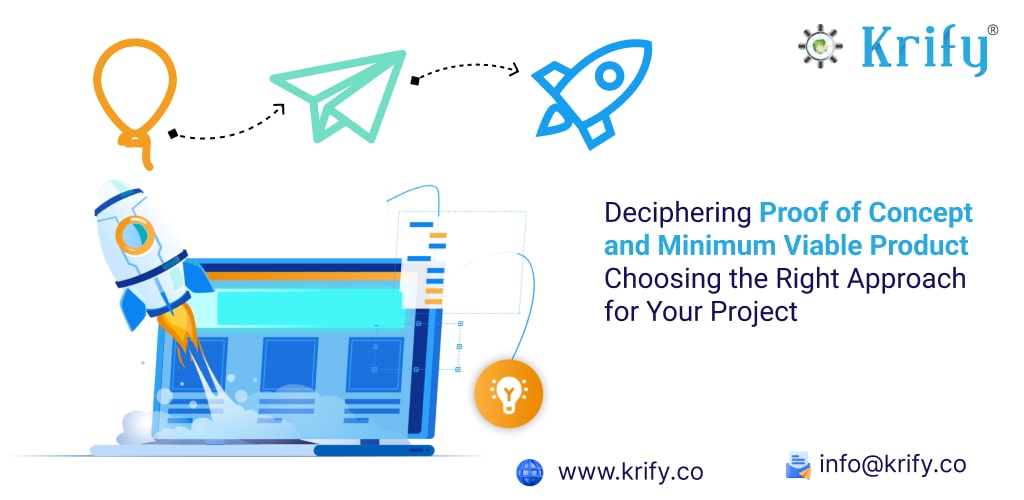In the world of startups and innovation, knowing the difference between a Proof of Concept and a Minimum Viable Product is very important. These two approaches help to validate ideas and bring products to market, but each serves a different purpose. Let us get to know what PoC and MVP really mean, and how to choose the right approach for your project.
Understanding the concept behind Proof of Concept and Minimum Viable Product:
Understanding Proof of Concept (POC)
What is a Proof of Concept?
A Proof of Concept (PoC) is a demonstration designed to verify that certain concepts or theories have the potential for real-world application. It’s often an initial implementation of an idea to show its feasibility, to validate that a particular method or approach can be successfully applied, or to demonstrate the viability of a proposed solution.
When to Use a PoC
- Testing Feasibility: Use a PoC to ensure that your idea is technically viable.
- Early Stage Validation: Ideal for startups looking to demonstrate the potential of their innovation to stakeholders or investors.
- Risk Mitigation: Helps in identifying and addressing technical challenges early.
Understanding Minimum Viable Product (MVP)
What is a Minimum Viable Product?
An MVP, or Minimum Viable Product, is a version of a new product that includes only the essential features necessary to satisfy early adopters and validate the core concept. The goal of an MVP is to quickly launch a product with minimal resources, gather user feedback, and iteratively improve the product based on that feedback.
When to Use an MVP
- Market Validation: Use an MVP to test your product in the market and validate demand.
- User Feedback: Ideal for gathering insights from real users to guide future development.
- Quick Launch: Allows startups to enter the market faster and start building a customer base.
Key Differences Between PoC and MVP
Objective
- PoC: Focuses on proving that a concept can be implemented.
- MVP: Aims to release a functional product to validate market demand.
Audience
- PoC: Typically targeted at internal stakeholders or investors.
- MVP: Targeted at early adopters and real users in the market.
Time and Resources
- PoC: Generally requires fewer resources and is quicker to develop.
- MVP: Requires more resources and time, as it must be market-ready.
Choosing the Right Approach for Your Project
Choosing between a PoC and an MVP depends on your project’s goals and stage. If you need to demonstrate feasibility and address technical risks, a PoC is the way to go. If your goal is to validate market demand and gather user feedback, developing an MVP is the better approach.
- Early Stage Projects: Start with a PoC to test the viability.
- Market Entry: Use an MVP to launch quickly and iterate based on feedback.
Conclusion
Both Proof of Concept and Minimum Viable Product are essential approaches in the product development process. Understanding their differences and knowing when to use each can significantly impact your project’s success. By choosing the right approach, you can effectively manage risks, validate ideas, and deliver products that meet market needs.



